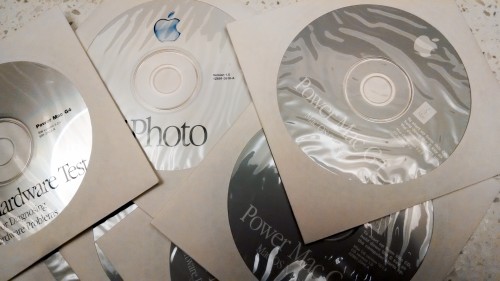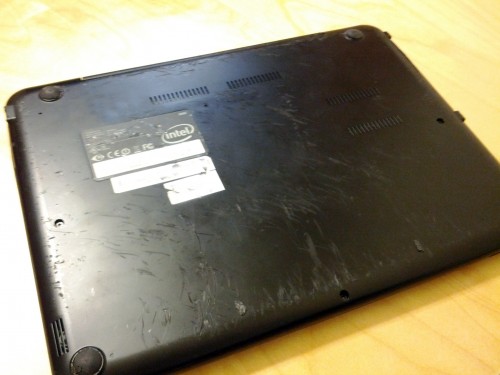In this episode of my quest to optimize my SFO transportation, I rented a car. But not just any car, I rented a BMW. And not just any BMW. I rented an electric BMW. That’s right, I got to drive an electric BMW to and from the airport. And it cost me less than it would have to drive and park my own car in long term parking.
DriveNow is a service from BMW, currently available in a few major cities in Germany as well as San Francisco in the US. You can rent a car, on-demand, and pay by the minute. And, you can drop it off at any DriveNow station. Since you pay only for the time, there’s no penalty for doing a one-way rental. Currently, it’s a $12 minimum charge for the first 30 minutes, 32¢/minute after that (13¢/minute for parking), and through June, the total charge is capped at $30 per 24 hours.
Parking at SFO’s long-term lot is $18 per day. So even if I’m only gone for a weekend, it’s still a better deal for me to rent a car each way, as I’m about 30 minutes from the airport.
So, how is it in practice? It’s mostly awesome, but there are a few kinks. Here are some notes from my experience so you can see what it’s like.
First, I unplugged the car, and then swiped my DriveNow card to unlock the doors. There was no use of a key at any point.

I was then prompted to enter a PIN to make sure that it was really me using my card. After entering my PIN and confirming that the car is clean and undamaged, I tapped on “Start reservation” and the car was ready to go. It’s a push-button start of course, and the car didn’t make any sound when it was turned on. The only indication that something had happened was the energy gauge flipping up to “Ready.” From there, it was just a matter of putting the car into gear and pressing on the accelerator.
The DriveNow location at SFO is at SkyPark, one of the off-airport parking facilities. It’s about the same distance from the airport as the official long-term parking lot. It wasn’t difficult to find, though of course I used Google Maps. Once there, an attendant directed me to park the car, end my reservation, and hop on the shuttle.
One of the nice things about SkyPark is that the shuttles run on-demand, so there’s not a lot of waiting. When I returned, I called SkyPark to let them know which terminal I was waiting at and the name of the car that I had rented via the DriveNow app just seconds before. A shuttle quickly arrived and took me back to SkyPark, where an attendant retrieved the car for me. When I returned the car to a parking lot in the South Bay, I ended my reservation and swiped my card to lock the doors. I then used my card, which doubles as a ChargePoint card, to release the charging cable at the station and start charging the car for the next customer. It’s a free charge at the DriveNow locations of course, but you can also access the paid stations when you’re out and about if you set up your ChargePoint account to allow that.
Overall, DriveNow provided a great experience and I’m planning on using it for all of my future SFO-based travels.
So what’s it like to drive? The car is great. It’s a BMW. It’s comfortable and it handles well. It has satellite radio. As an electric vehicle, the ActiveE makes the coolest sounds, too. When I test-drove a prototype a year ago, the BMW intern who rode along with me pointed out that because of the way the regenerative braking works, you can learn how to drive without tapping the brake pedal. As you lift your foot from the accelerator, the generator acts as a brake, and yes, the brake lights will engage so the cars behind you aren’t surprised. Of course it’s still recommended to use the brake pedal when stopped at crosswalks, etc. My camera was mounted in such a way that the mic really doesn’t pick up will, so you can probably find better recordings elsewhere, but for the record, here’s what the regenerative braking and electric acceleration sounds like:
One of the advantages of driving a fully electric car is that you can drive in the carpool lane. Note the “Access OK” decal below:

This is pretty useful during rush hour. One weeknight when I was meeting friends for dinner in San Francisco, I rented a DriveNow car for the evening so I could use the HOV lane up to the BART station, where I parked like any other traveler:

I could have driven all the way to the city, but I don’t like parking there. Instead, I simply put the reservation into “park” mode, and retrieved the car a few hours later. Since there’s a cap on how much I could be charged for 24 hours, I was only charged $32.55 ($30 plus 8.5% tax) for the whole evening.
On a trip back from the airport, my reservation was started at 9:48 PM and ended at 10:32, as I stopped at my office for a few minutes to feed ALF. I got charged for 41 minutes of driving and 3 minutes of parking, for a grand total of $17.26 including tax, less than a day of parking, and significantly less than a cab ride.
There are a couple of things you should know about the car, though. The trunk space is limited. I put my carry-on bag in there, and there wasn’t much room for anything else.

Multiple passengers with luggage could present a challenge, just as with any small car.
The range is also limited. A Tesla Model S’s range is rated at over 200 miles from the EPA, but the ActiveE is rated at 94 miles. It’s more than adequate for getting to the airport, and I’ve done a round trip from Mountain View to Millbrae and back with no problem, but I couldn’t help myself from constantly checking the charge level while driving.
While important to know, the limitations I noted above don’t affect my use case. As with FlightCar, I did find that there are some rough edges that need to be worked out in the DriveNow service:
- The website is slow.
- I ran into some errors while trying to fill out my profile and had to call them to get my information filled out completely. I would have preferred a friendlier person to talk to.
- There’s a bug with some cars where the current charge level is incorrectly reported in the mobile app. The first time I tried renting a car, the app indicated that the car’s battery was 100% charged, but it was actually at less than 20% when I got in. was told that they’d would reverse the $13.02 charge for the reservation (I never moved the car; I just turned it on), but so far that hasn’t happened.
- I failed to end my reservation when dropping off the car at SkyPark. I tapped on “End reservation,” but got an error because I had not yet turned off the car. When I tried again, I was unable to get back to the screen with the option to end the reservation, so I assumed that the process had finished, got out of the car, and scanned my card to lock the doors. I later got a text message indicating that my reservation was still active. This may have been user error, but it still confused someone who works with computers all day. I haven’t bothered to try getting a partial refund on that. I’ll have to write off the extra charges as the cost of research for a blog post.
- SkyPark seems like a pretty good service, but it was another one of those unpleasant things in America where the expectation of tipping was unclear. I never have cash, I dislike ambiguous situations, and I’m perfectly happy to pay more to avoid them.
- SkyPark is a valet service, so someone else swipes your card, enters your PIN, reports damage, rates the cleanliness, and starts your reservation. There was nothing wrong with the car, but at the other locations I’ve liked being able to check out the vehicle myself before renting it, especially if there are others available in the same area.
Some teething pains are always expected with a new service, and I’m still eagerly awaiting my next reservation!
Update on June 18, 2013:
I met a couple of members of the DriveNow team when doing my last pickup. They were updating the software on the cars, and super-helpful! One of them even showed me how all of the DriveNow stations are saved in the navigation system, and set it up to direct me to SkyPark. He also gave me a couple of other tips: You don’t need to reserve a car in advance with the app. If you see an available car, just tap your card and the doors will unlock. And when we both ended up at SkyPark at the same time, he was there as I ended my reservation and showed me that a green light (indicating that the car is available), confirms that my reservation has successfully ended. I didn’t have any unintended charges this time… it was $14.76 going up to the airport and $13.02 on the way back!
My SkyPark experience was a bit different than the first time. Unlike before, the valet retrieved the car with the SkyPark card instead of taking mine and asking for my PIN, so I was the one who started the reservation this time. There was some confusion when I got on the bus and they were unable to find the exact car that I reserved, but it wasn’t really an issue as I just told the valet to grab any of them.








